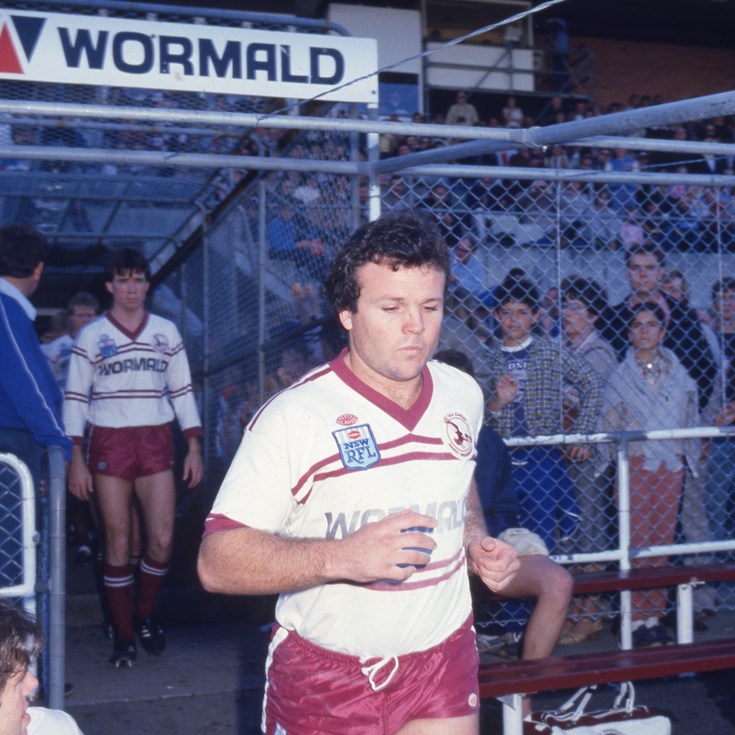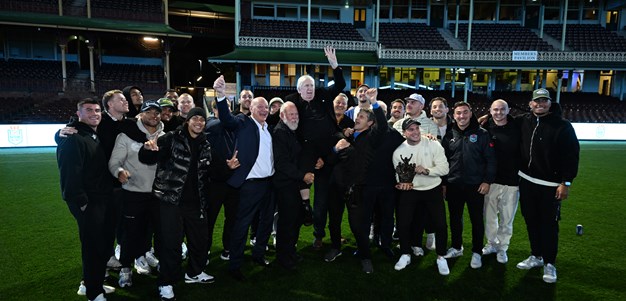By Roy Masters
Benny Elias, like his fellow Hall of Fame inductee, Les Boyd, is often judged in terms of everything except his talents on the football field. As his Balmain and NSW teammate, Steve ‘Blocker’ Roach, says, “People are jealous of him because he is rich and cocky, but he was the greatest Tiger ever to play.” That’s stellar praise of a 1908 foundation club player but ‘Blocker’ justifies it by attributing to Elias the defining test of a champion: “Benny changed the game.”
Correct. He was the first of the creative hookers. “He invented plays at the defensive line,” continues ‘Blocker’. “He ducked, dived and spun out of tackles and slipped the ball to supports. We know what great players are going to do but it is another thing all together to stop them.”
Before Elias, a hooker’s role was to win the scrum; pass the ball from dummy half and tackle. ‘Balmain Benny’ revolutionised the role of the No.9 with his running and tactical kicking. He was a new style player in an old-style game. If the word wily had not existed, it would have been invented for him. As St George coach in his debut years of the 1980s, I accorded him special attention in pre-match tactics with these instructions: “Keep a straight defensive line, concede Benny five metres but under no circumstances, jump out of the line at him because he will exploit the hole you leave.”
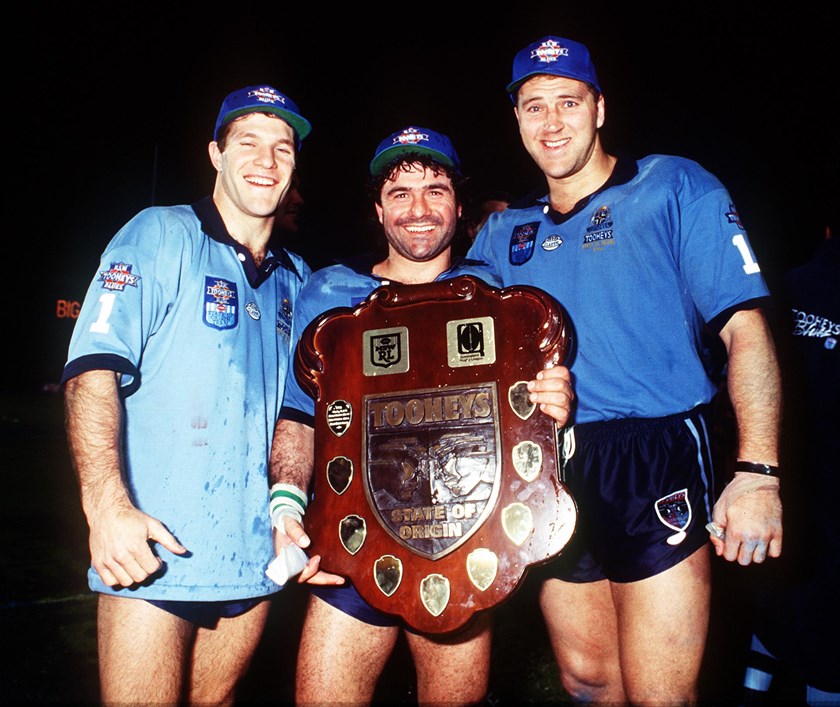
‘Blocker’s’ praise is especially significant when you consider the big prop’s idea of Utopia is the taste of blood through a broken nose. He would not accord such high status to someone who was not tough and durable. Elias played 235 top grade games from 1982 to 1994 and began his representative career for NSW in 1985. Significantly, he bridged the era between competitive scrums - when hookers were sometimes called rakes - and non-competitive scrums – where hookers often pack anywhere but the front row. Yet in that period of vicious scrimmaging when props fought for the loose head and packed with loose arms, Elias won the ball against the scrum feed more than most of his opposites.
His induction into the NRL Hall of Fame comes 16 years after the inclusion of his fierce rival for national honours, Steve ‘Boxhead’ Walters. Walters is two years younger than Elias’s 60, but played 16 tests for Australia, compared to ‘Benny’s’ six. However, Walters played 14 Origin matches for Queensland to Elias’s 19 matches for NSW. Walters was physically stronger and quick out of dummy-half, skills which suited the Australian team, but he was not as creative at the ruck where Elias troubled Queensland in Origin matches. Elias says of his rival, “I’ve got a high regard for ‘Boxhead’. He was tough, very competitive. Strong. Knew his role. He was a second-rower running from dummy half. He didn’t do the tricky, flamboyant stuff.”
There are a couple of well circulated stories about Elias which probably undermine his legacy and delayed his induction into the Hall of Fame. In a scrum in a 1994 Origin match, there was a lot of butting of heads as the two packs met, with ‘Boxhead’ saying to ‘Benny’, “Settle down ‘Benny’. I’ve got a Test match to play at the weekend.” Elias acknowledges the cleverness of the remark but had the last laugh. “I said, ‘Touche’ to his comment but we (NSW) won the match. It was also Mal Meninga’s last match as captain of Queensland.”
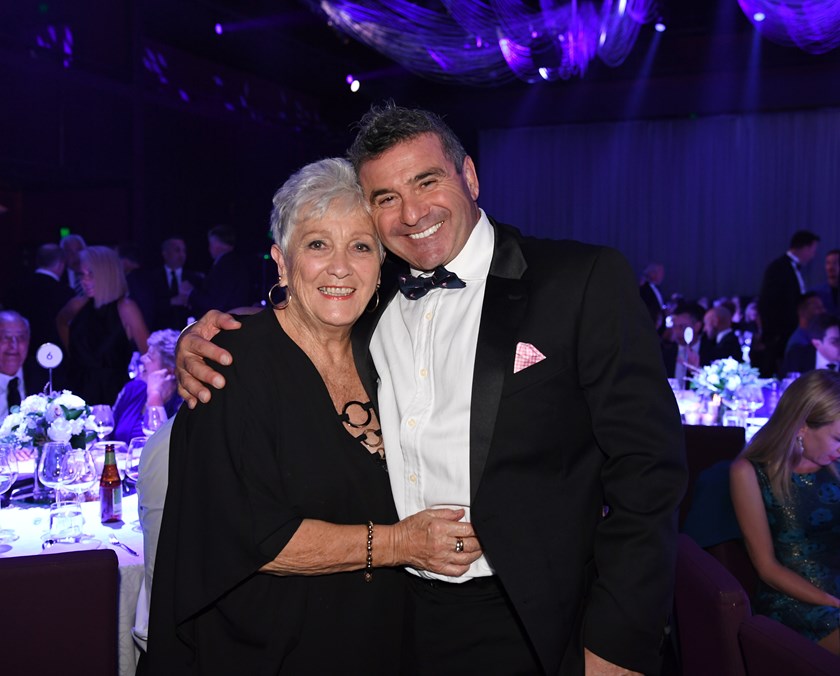
The second story concerns NSW coach, Phil ‘Gus’ Gould, producing two footballs at training. “One is for you Benny and the other one is the team ball,” Gould said. “When you play with us, ‘Benny’, you use the team ball.” It obviously refers to what Gould perceived to be Elias’s selfishness but there are Origin matches where I recall Elias’s inventiveness creating match-winning tries. Again, Elias laughed last. “The NSW players all voted me the game ball, and all signed it,” he recalls. “I said to ‘Gus’, ‘Remember that ball you gave me? Here, take it back.’”
Benny admits his deception at the ruck confused and sometimes angered his teammates. “’Blocker’ would get the shits with me. I’d dummy without telling him. He’d say, ‘Give me the f----ball.’ I couldn’t tip him what I was going to do because the opposition would know. There was always someone in the defensive line who was lazy, or had some weakness, and I was trying to exploit it, be it with footwork, speed, or dummy. I tried to peg the lazy bloke. I’d always take that first step from dummy-half to the advantage line and if others were in a better position, I’d give them the ball.” ‘Benny’ put the dummy into dummy-half. “I tried to change the role of the No.9 to be unpredictable. “Up to then, it was the No.7, the first receiver, who was the creative one.”
In many ways, Elias was the prototype of perhaps the greatest player of the modern era, Melbourne, Queensland and Australian hooker, Cameron ‘the Accountant’ Smith. Yet Smith will be inducted into the Hall of Fame concurrently with Elias and is destined to become an Immortal, only three years after he retired. Both had their faults as defensive players. Benny would sometimes push a big teammate back from a tackle into the defensive line so he could make an easier tackle from the side on the next play. Cameron was often the third man into the tackle, preserving his longevity. Nor did Smith have to fight to win the ball in the scrum. While the majesty and durability of ‘the Accountant’, and the toughness of ‘Boxhead’ can never be denied, it’s their premierships (three each) and Test matches (56 for Smith) which have probably helped elevate them much earlier than Elias, rather than any revolution they forced upon the game. Elias played in two Grand Finals and lost both.
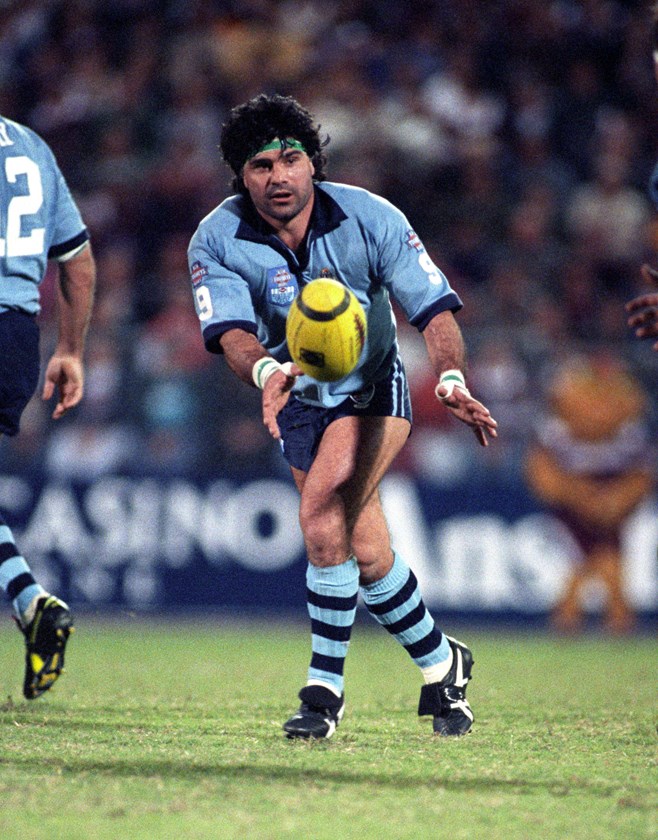
Balmain may have won the 1989 decider if a field goal attempt by Elias did not hit the cross bar. (He kicked 33 field goals in his career). “It would have put us seven points ahead with six minutes to go,” he said. But again, he is generous with his recall. “Sure, I was gutted but as I reflect on it, look at the players in that Raiders team which beat us ... Meninga, Laurie Daley, ‘Boxhead’, Belcher, Bradley Clyde, Ricky Stuart, Glen Lazarus ... all super stars. It became a great moment in their lives, too. It has gone down as one of the great Grand Finals.”
It is an observation at odds with a perception of Elias as selfish and self-centred. With that gracious comment about his 1989 opposition, he elevates the game above himself. “Rugby League was my first love,” he says. “I loved it from the age of 5, whereas my first girlfriend was aged 16. I have been faithful to the game since playing in the backyard at home, listening to Frank Hyde on the radio and trying to imitate what the big boys were doing on the field.”
So, what’s the cause of the negativity that has dogged him? He volunteers a comment that evokes the enduring racism of a post-World War 2 Australia, when hundreds of thousands of Mediterranean migrants came here. Born in Tripoli, Lebanon, Elias says, “I was a 5’8’’ young wog playing against 6’3” big bastards and had to find a way to be competitive.”
The 1994 Origin series is telling because it defines Elias and the fear he invoked in the Maroons. When Mark Coyne scored a last-second winning try in the opening game, vision of the match shows Elias around his legs. It also shows Maroons half, Allan ‘Alf’ Langer, racing over and pushing Elias away, rather than celebrating. ‘Alf’, now seen as a lovable larrikin, gave a verbal spray which Elias says focussed on his ethnic background. However, in the second game at the MCG, Elias, with the pass of a conjurer, set up a try for Glenn Lazarus , one of only two in their 14-0 win. In the 1994 decider in Brisbane, Elias intercepted a Langer pass to set up the Blues first try in the comprehensive victory. Remember, this was the Boxhead ‘Test match’ match and Meninga’s last as Queensland captain.
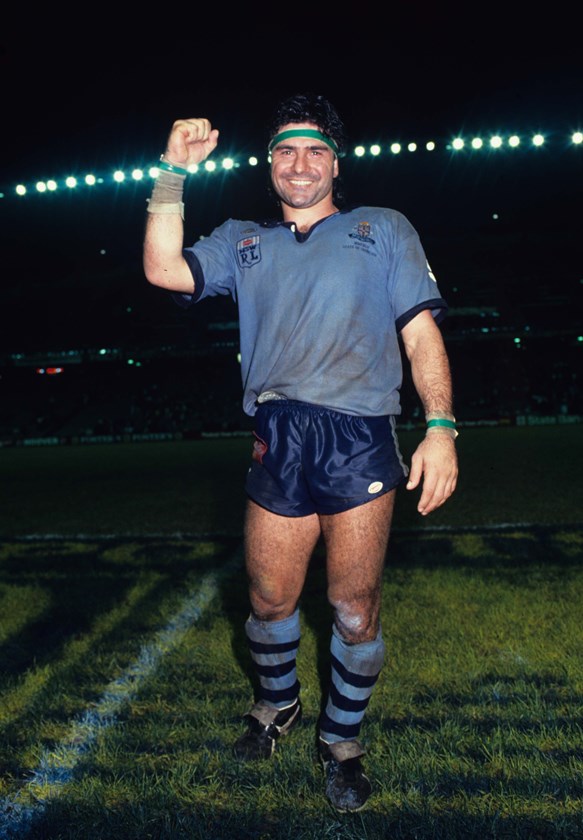
At a time some of his contemporaries have struggled financially in their post-playing career, Elias has also had the last laugh. He seized on the mobile phone revolution and owned 42 stores, being Optus’s first dealer. He sold the business and became a property developer. He was a board member of Wests Tigers when Balmain Leagues Club was anxious to find a property development partner after their project became problematic in the global financial crisis. He resigned from the board and offered to underwrite a high-rise development which would include a licensed Tigers club. “I had all my assets on the line, the bank was happy and I found a partner but the GFC struck and our DA got knocked back three times,” he said. Some years later, the club become insolvent, and the Magpies West Ashfield club took majority ownership of the joint venture and the licence of any future Tigers club. Somewhere in that maze of red tape and white ants, Elias’s detractors characterise him as the villain. And the Sydney rugby league scene has always had a keen sense of rumour. Half-truths are like half bricks They travel further.
Of his fellow Hall of Fame inductee and villain, Benny pays the footballer’s ultimate compliment: “I’d much rather play with Les Boyd than against him.”
Many a player would same the same of Benny: a blend of grit and grace, of wile and guile, the vanguard of the multi-skilled No.9 we enjoy watching today.
